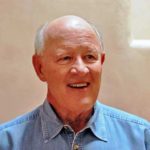Mass shootings are the subject of mass writing. Social contagion is an inevitable consequence of mass shootings. Both are ethical minefields and deserve special attention. In fact, connecting ethics, mass shootings, and social contagion deserve essay-length treatment rather than short-form blogging. That said, this blog is a teaser for the complexity and intensity that mass shootings inflict on people who kill massively and die with those they kill. America’s 21st-century madness, mass shootings, is a contagious loss of reason.
Social Contagion
Social contagion is acquired, normalized, and practiced by enculturation. Children learn to lie from parents—little white lies meant to do no harm. They also learn how and who to hate- by family segregation and disfavoring people of color. And over time, those children grow up filled or at least leaning into the evil of deception. “Deception is evil. It is unethical, immoral, bad, wrong, unfair, and harms its ‘victims.’ It is abhorred in religion, relationships, politics, the workplace, and sport. Its practice is associated with con artists, criminals, scammers, shooters, and presidents. Deception delights, thrills, mystifies, and surprises. It also defends our democracy and safeguards our liberty.”[1]
Mass Shootings
In the larger context of mass shootings, the social contagion effect i.e., death, may be as dangerous to the health of our democracy as mass shootings are to the way we live. “Social contagion occurs when a memory spreads from one individual to others vis social interaction. Its mnemonic spread is not limited to memories based on shared events. It can involve events and experiences only one party was initially exposed to.”[2]
Shooters rise up out of the depths of despair, hate, or self-delusion. They think they have to kill because they cannot live with who or what they are. They are the consequence of social contagion’s capacity to reach damaged memories and tortured souls. They don’t invent the idea to kill total strangers. They succumb to killing like rabid dogs devouring a flock of sheep. They don’t really see the sheep as victims but more as a means to achieve their own glorious death—the one thing they can control is the gun in their hands.
Mnemonic spread explains why memories exist in many people notwithstanding only one party was initially exposed to the event. The shooter in a mass shooting may be remembered by many who were not there at all because they are influenced by another person’s memory and come to believe it’s their own. This phenomenon leads to the creation of false memories.
The term “mass shooting” is officially defined as a multiple homicide incident in which four or more victims are murdered with firearms, within one event, and in or more locations in close proximity.[3] This legal definition serves also as an entry-level ethics parameter for journalists, reporters, letter writers, protest signs, and text messages. Don’t call it a mass shooting unless it’s murder by gun in one event in close proximity. It’s remarkable how some leave the “gun” out of the description because they don’t think guns kill people—only people kill people.
If you combine a damaged mind, an available human target, and a high-capacity gun, you often end up with a mass shooting. About that, there’s no doubt. Mass shootings are investigated as toughly as possible. But on the road from gunfire to news blast, comes the all too familiar path and the almost inevitable. The path is lined with gun control measures and the end result is utter failure in favor of gun ownership. Why? For starters, splashing the story of yet another high-profile mass shooting is the icing on the cable news cake.
“News coverage of high-profile mass shootings on American cable news has adopted near clockwork patterns: first comes shock and the scramble for information, followed by calls from communities and legislators for new gun restrictions, then reporting and speculation about the motives of the shooter (“Is evil or mental illness to blame?”). The remainder of the time is spent toggling between analysis of why the US sees these shootings so regularly, how the shooter got their gun, and which signs of violence could have been noticed earlier.”[4]
Because seasoned reporters, journalists, and editors are given pithy responses, we often hear, “Rinse and repeat.” That monicker is a sign of not only the deceit of any possible remedy but also a motivator to buy a gun, just in case you need it when madness comes to your doorstep. “Epidemiologists and social scientists have found that gun violence at the community level can be contagious, with one shooting begetting the next. Is there such a thing as media contagion?”[5]
Apparently, no one has conducted a scientific research assessment of either the prevalence or the expectance of mass shootings, there is widespread guessing that shootings are contagious. That alone does not make them social contagion. “While it is unclear how contagion is related to news coverage, Dr. Sherry Towers, a data scientist explains that a [research] team found that shootings didn’t cluster geographically, but chronologically, suggesting that exposure to the ‘contagion’ is widespread. Towers suspects that aspects of media coverage play a role but cautions that more research is needed to establish the relationship.”[6]
A 2021 article titled, “The Contagion of Mass Shootings: The Interdependence of Large-Scale Massacres and Mass Media Coverage,” closes in on the subject. “Mass public shootings have generated significant levels of fear in recent years, with many observers criticizing the media for fostering a moral panic, if not an actual rise in the frequency of such attacks. Scholarly research suggests that the media can potentially impact the prevalence of mass shootings in two respects: (i) some individuals may be inspired to mimic the actions of highly publicized offenders; and (ii) a more general contagion process may manifest as a temporary increase in the likelihood of shootings associated with a triggering event. In this study of mass shootings since 2000, we focus on short-term contagion, rather than imitation that can traverse years. Specifically, after highlighting the sequencing of news coverage prior and subsequent to mass shootings, we apply multivariate point process models to disentangle the correlated incidence of mass public shootings and news coverage of such events. The findings suggest that mass public shootings have a strong effect on the level of news reporting, but that news reporting on the topic has little impact, at least in the relatively short term, on the subsequent prevalence of mass shootings. Finally, the results appear to rule out the presence of strong self-excitation of mass shootings, placing clear limits on generalized short-term contagion effects.”[7] the US Department of Justice conducted this study.
Research studies are vital and accountability by the media is important. Even so, there’s little doubt about the tangible connection between shooters and the partisan gun debate in this country. If nothing else, the debate and the shootings contribute to the imaging and noise level that erupt from mass shooting cases. “During breaking news and follow-up coverage of a mass shooting, journalists should talk about warning signs of potential violence, particularly among young men who may struggle with isolation and suicidal ideations, and have alluded to plans to commit violence. . . You can’t assume that all is well. [Shootings are] happening so frequently that we can’t just say, ‘We didn’t see it coming.’”[8]
There is an underlying psychiatric, psychosocial, and psychodynamic at play in all mass shootings by a single individual. In what appears to be the first-ever systematic psychiatric study of this complex topic, a team of forensic psychiatrics assessed thirty-five mass shooting perpetrators who survived. The key to this study is examining mass shooters that did not commit suicide by cop. They survived, were identifiable, and were assessable. The shootings occurred between 1982 and 2019. They combed through psychiatric evaluations from the judicial proceedings, interviewed the forensic psychiatrists who conducted direct assessments and examined the shooters’ backgrounds. Additionally, they randomly selected 20 deceased shooters from that same time period and analyzed all the information they could find.[9] “They determined whether the perpetrators could be diagnosed with psychiatric illness by utilizing standardized instruments such as the American Psychiatric Association’s Diagnostic and Statistical Manual of Mental Disorders . . . and the Sheehan MINI standardized scale.”[10]
Unsurprisingly, the data and assessments confirmed the obvious. “Their findings showed a high prevalence of undiagnosed psychiatric illness in mass shooters. The majority of surviving shooters (87.5%) had misdiagnosed and incorrectly treated, or undiagnosed and untreated, psychiatric illnesses. Researchers found psychiatric illnesses including schizophrenia, mood disorders, delusional disorder, severe personality disorders, substance-related disorders, and PTSD. There was insufficient information in three cases. A clinical misdiagnosis and mistreatment of pre-pubertal, early-onset schizophrenia was associated with the worsening of many of these assailants’ psychotic symptoms. Most perpetrators studied experienced profound estrangement not only from families, friends, and classmates but most importantly from themselves. Being marginalized and interpersonally shunned rendered them more vulnerable to their un/mistreated psychiatric illness and to radicalization online, which fostered their violence.”[11]
Surprisingly, the study identified a common diagnosis that stunned many mental health providers. “It found that 18 out of the 35 surviving shooters had schizophrenia, overwhelmingly the most common diagnosis. In 15 of 20 cases in which the assailant died, the researchers determined that eight had schizophrenia. None were on appropriate medication. Why weren’t they diagnosed correctly? ‘The DSM-5 prevents a definitive diagnosis of schizophrenia before 18 years of age because the adolescent brain is still developing. . . However, there are identifiable early onset schizophrenia symptoms. So, it is extremely important to provide an adolescent experiencing early onset symptoms such as hallucinations and delusions with crucial psychiatric treatment and antipsychotic medication. The earlier treatment is initiated the better the clinical outcome to stop their psychotic symptoms.”[12]
Confabulation
There is an inherent writing risk at play as well, confabulation. Confabulation is a type of memory error in which gaps in a person’s memory are unconsciously filled with fabricated, misinterpreted, or distorted information. When someone confabulates, they confuse things they have imagined with real memories. Then they fill in missing details with confabulated memories of an event.
Confabulated memories are common when assessing mental health. “For example, a person with schizophrenia who is experiencing delusions may confabulate memories that become increasingly fantastical and intricate the more they are questioned about them.”[13]
Stigma
Stigma, in mental health terms, is a mark, stain, or blemish. Myths, misunderstanding, ignorance, and negative attitudes can all result in stigma for people living with mental health conditions, who may be treated as dangerous, different, or as if they are somehow less than other people. The stigma is not true or fair, but it still hurts. When a person is labelled by their illness they are no longer seen as the person they are, but as part of a stereotyped group.[14]
Too many Americans fall into a “monkey see, monkey do” mentality when they read about mass shootings. It is true that some young men struggle mentally and act out on that struggle in mass shootings all over America. The far right blames mental illness as the fundamental cause of mass shootings—diverting discussion of role guns play in every mass shooting. And the public in general links serious mental illnesses, like schizophrenia or psychotic disorders with violence and mass shootings.
The Columbia University Department of Psychiatry and the New York State Psychiatric Institute authored the Columbia Mass Murder Database (CMMD) to examine the relationship between serious mental illness and mass shootings in 2021. “Serious mental illness—specifically psychosis—is not a key factor in most mass shootings or other types of mass murder. Approximately 5% of mass shootings are related to severe mental illness. And although a much larger number of mass shootings (about 25%) are associated with non-psychotic psychiatric or neurological illnesses, including depression, and an estimated 23% with substance use, in most cases these conditions are incidental.”[15]
The CMMD explains why the general public links mental illness with mass shootings. “A lot of people who aren’t experts in mental illness tend to equate bad behavior, and often immorality, with mental illness. These are a false equivalence. . . it is incumbent on us, especially when we’re talking about something as horrible as mass shootings, to make sure other people understand that all bad behavior, and certainly not evil and pure psychopathy, is not the same as mental illness.“[16]
Is the far-right view, correct? Are guns merely coincidental in mass shootings? “Guns are the most successful method of killing oneself. So, one main reason people choose guns is they want to die. In about 30% of mass shootings, perpetrators kill themselves with their own gun; about 10% are suicide by cop. However, while guns are the most effective method of suicide, they’re not as effective at killing a large number of other people. Mass murder committed with means other than firearms, such as bombing, arson, vehicles, even stabbings, is about two and a half times more deadly than mass murder committed with firearms. Another reason people use firearms to carry out mass shootings, aside from availability, is our cultural romanticization of violence. As a result, the movie, television, music, and video game industries will have to play a role in any efforts to decrease gun assaults.”[17]
However, gun availability is an important factor in gun violence. The proof lies in our history. “The yearly prevalence of the incidence of mass murder was stable at about seven per billion people, or seven mass shootings for every billion people, between 1900 and about 1970. Then between about 1970 and 2019, the incidence increased by four times, so now mass shootings occur about 28 times per billion people around the world. One might say that this is because of the availability of guns in general, and automatic weapons, in particular, especially in the U.S. where these weapons became more available to the general population during this time period. . . The other thing that one must consider is that most mass shootings are committed with non-automatic weapons, making them the weapons of choice, and supporting the notion that gun availability is a primary contributor to method of mass murder.”[18]
And then there is the matter of traits. What are the traits of a mass shooter? Apparently, there are four “defining moments that most perpetrators experience on the way to a mass shooting. “The path of violence often begins with early childhood trauma. At a young age, 42% of all mass shooters experienced physical abuse, sexual abuse, parental suicide, or were a victim of severe bullying. The second step on the pathway to violence is a crisis—a loss of a job, a breakup, a feeling of hopelessness. In many cases, it’s a suicidal crisis. Seventy-two percent of mass shooters were suicidal either before, or at the time of the shooting. Those suicidal thoughts lead to the third step, radicalization.”[19]
Just as we have an Innocence Project in America, we also have a Violence Project.[20] It found “Perpetrators time and again search guidance—going to the internet, reading manifestos of past gunmen, ending up in chat rooms where mass shooters are revered, and many then share their own plans. Forty-four percent of mass shooters leaked their plans, often posting about it on social media. The final stage is access to a firearm. According to the National Institute of Justice, 77% of mass shooters got their guns through a legal purchase, often gaining access close to the time of the shooting.”
So, what is sui generis in mass shootings? By sui generis, I mean in the sense that there is a core premise that puts mass shootings in a class by itself and therefore unique. The data and the researchers support many causes, numerous explanations, and limitless villains. It appears that neither the shooters themselves, nor the gun industry is foundational in mass shootings. Likewise, it’s not solely incited by mental illness or psychosis. America’s love of guns, while legendary in its own respect, can’t be blamed. Even the NRA, the gun industry’s primary shill, can’t be the cause célèbre. So, what’s left? Is it media coverage? If we were Russia or some other totalitarian country, would exclusive media control in the hands of a newly crowned czar, be the answer?
Modern media coverage of mass shootings arguably rose up out of the 2012 Aurora theater shooting.[21] That horror occurred inside a Century 16 movie theater in Aurora, Colorado during a midnight screening of the film The Dark Knight Rises. Dressed in tactical clothing, twenty-four-year-old James Holmes set off tear gas grenades and shot into the audience with multiple firearms. Twelve people were killed, and 70 others were injured, 58 of them from gunfire.
The aftermath of that pivotal mass shooting included a widely covered national debate over the sale of guns and gun control. It is also credited with a national campaign against media coverage. “In 2015, a campaign titled No Notoriety was started by the parents of Alexander Teves, who died in the shooting. According to Teves’ father, the campaign’s incentive is to encourage media outlets to limit the usage of the suspect’s name and photos when reporting about the Aurora shooting, as well as other mass shootings that receive national media coverage. In an interview on CNN, Teves’ parents said they and the relatives of other victims believe the mass media coverage of Holmes’ name and photo may inspire others to commit mass shootings for notoriety.[22]
Is it possible that national media coverage has a contagion effect on mass shootings? The American Journal of Public Health released an exhaustive study in 2017 titled, “Mass Shootings: The Role of the Media in Promoting Generalized Imitation.”[23] This study was commenced at a time when mass shootings in the U.S. occurred approximately every 12.5 days. The study began by posing a dreaded possibility. “Recently a contagion effect has been suggested wherein the occurrence of one mass shooting increases the likelihood of another mass shooting occurring in the near future. Although contagion is a convenient metaphor used to describe the temporal spread of a behavior, it does not explain how the behavior spreads. Generalized imitation is proposed as a better model to explain how one person’s behavior can influence another person to engage in similar behavior. . . Contagion has been documented across a variety of other behaviors, including airplane hijackings, smoking cessation, and binge eating, and has been well researched in relation to suicide. There is now evidence that when a mass shooting occurs, there is a temporary increase in the probability of another event within the next 13 days on average.”
The study’s conclusions are worthy of the effort. “A mass shooting is a complex and destructive act that occurs as a result of many factors. One factor that is relevant to the spread of mass shootings and other “contagious” behaviors is generalized imitation. . . the media appear largely responsible for providing the model to imitate. . . it is likely that media-prompted imitation extends beyond mass shootings. A media effect has been shown with suicide, is implied in mass shootings, and may play a role in other extreme events such as home-grown terrorism and racially motivated crimes. . . Public pressure could be exerted on the various media outlets and individual contributors to change their reporting tactics. In the case of new and social media, this same pressure could influence the various platforms to provide guidelines regarding uploaded content related to a mass shooting. The first step toward building this public pressure is to make the general public aware of the link between the media and generalized imitation, as well as the role the media play in unknowingly perpetuating acts of violence.”[24]
So, on the one hand we have media-prompted imitation and on the other mass shooting events every 12.5 days. When perpetrators get it down to daily mass shootings then we will conduct more studies and open more crematoriums. There is no agreeable end. There are no mass shootings in Moscow.
[1] https://www.sciencedirect.com/science/article/abs/pii/B9780323856676000153. See also, Simon Henderson, Academic Press, “Creativity and Morality—Explorations in Creativity Research.” Chapter 7—Creativity and Morality In Deception. Pages 101-124, 2023.
[2] https://www.sciencedirect.com/topics/psychology/social-contagion
[3] Investigative Assistance for Violent Crime Act of 2012; Public Law 112-265, 126 Stat. 2435 (2013).
[4] https://www.theguardian.com/us-news/2023/may/12/news-social-media-effect-mass-shootings
[5] Ibid.
[6] Ibid.
[7] James Alan Fox, Nathan E. Sanders, Emma E. Fridel, Grant Duwe, & Michael Rocque. “The Contagion of Mass Shootings: The Interdependence of Large Scale Massacres and Mass Media Coverage.” Statistics and Public Policy, 8:1, 53-66, DOI: 10.1080/2330443X.2021.1932645. See also, https://www.theguardian.com/us-news/2023/may/12/news-social-media-effect-mass-shootings
[8] Ibid.
[9] https://www.psychologytoday.com/us/blog/finding-positivity/202208/mass-shooters-systematic-psychiatric-study.
[10] Ibid.
[11] Ibid.
[12] https://www.verywellmind.com/confabulation-definition-examples-and-treatments-4177450
[14] https://www.health.nsw.gov.au/mentalhealth/psychosocial/foundations/Pages/stigma-define
[15] https://www.columbiapsychiatry.org/news/mass-shootings-and-mental-illness
[16] Ibid.
[17] Ibid.
[18] Ibid.
[19] https://www.cbsnews.com/detroit/news/a-look-into-the-traits-of-a-mass-shooter/
[20] https://www.theviolenceproject.org/
[21] https://en.wikipedia.org/wiki/2012_Aurora,_Colorado_shooting
[22] Ingold, John (February 8, 2015). “As trial nears, debate grows over naming the Aurora theater shooting”. The Denver Post. Archived from the original on June 1, 2015. Retrieved May 13, 2015.
“Victims’ parents want “no notoriety” for mass shooters”. CNN. January 25, 2015. Archived from the original on May 23, 2015. Retrieved May 13, 2015.
[23] James N. Meindl, PhD and Jonathan W. Ivy, PhD. Am J Public Health, 2017 March; 107(3):368-370. Published online.
[24] https://www.ncbi.nlm.nih.gov/pmc/articles/PMC5296697/

I am an author and a part-time lawyer with a focus on ethics and professional discipline. I teach creative writing and ethics to law students at Arizona State University. Read my bio.
If you have an important story you want told, you can commission me to write it for you. Learn how.






 I am an author and a part-time lawyer with a focus on ethics and professional discipline. I teach creative writing and ethics to law students at Arizona State University.
I am an author and a part-time lawyer with a focus on ethics and professional discipline. I teach creative writing and ethics to law students at Arizona State University.  My latest novel is Hide & Be.
My latest novel is Hide & Be.  If you have an important story you want told, you can commission me to write it for you.
If you have an important story you want told, you can commission me to write it for you.